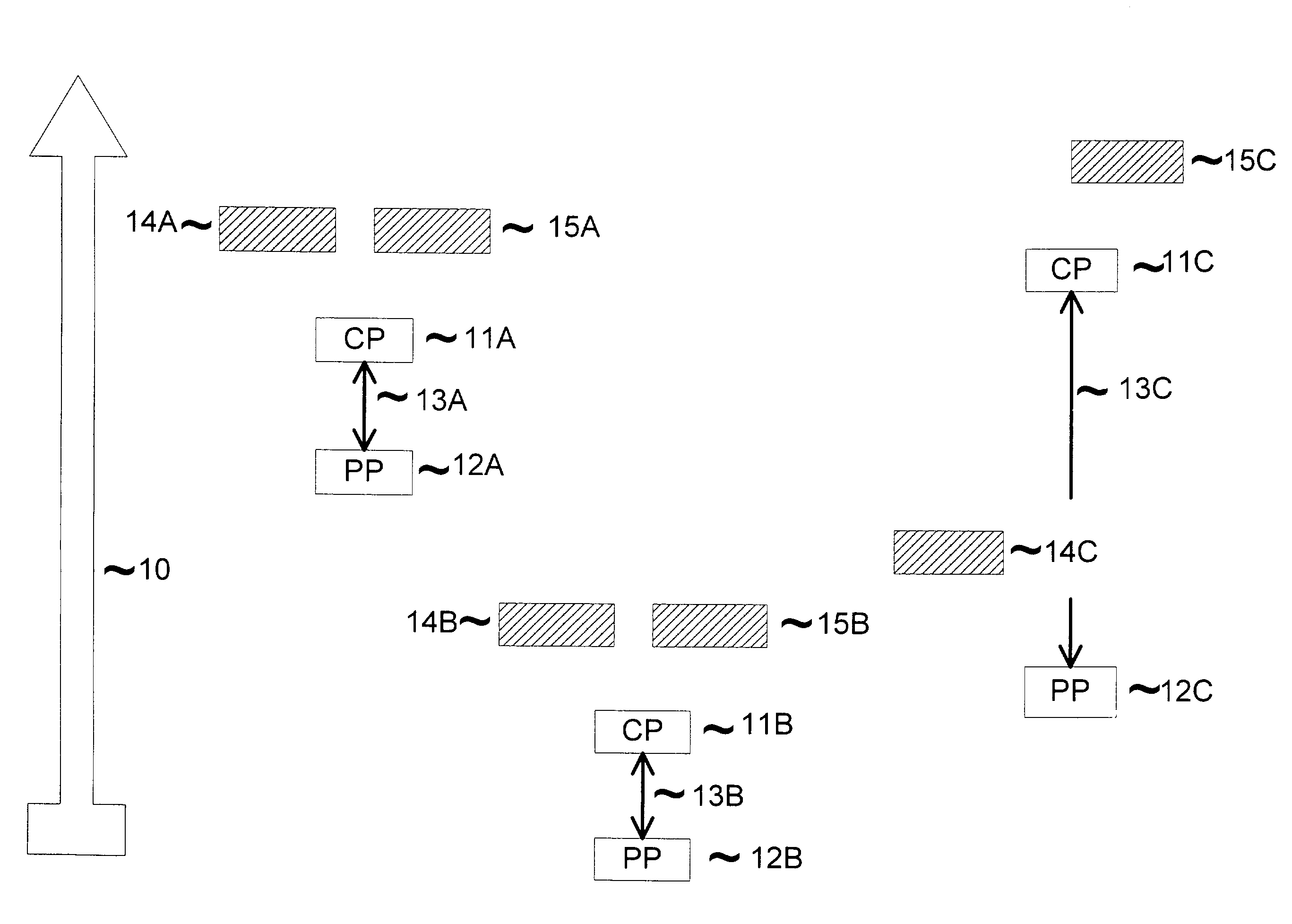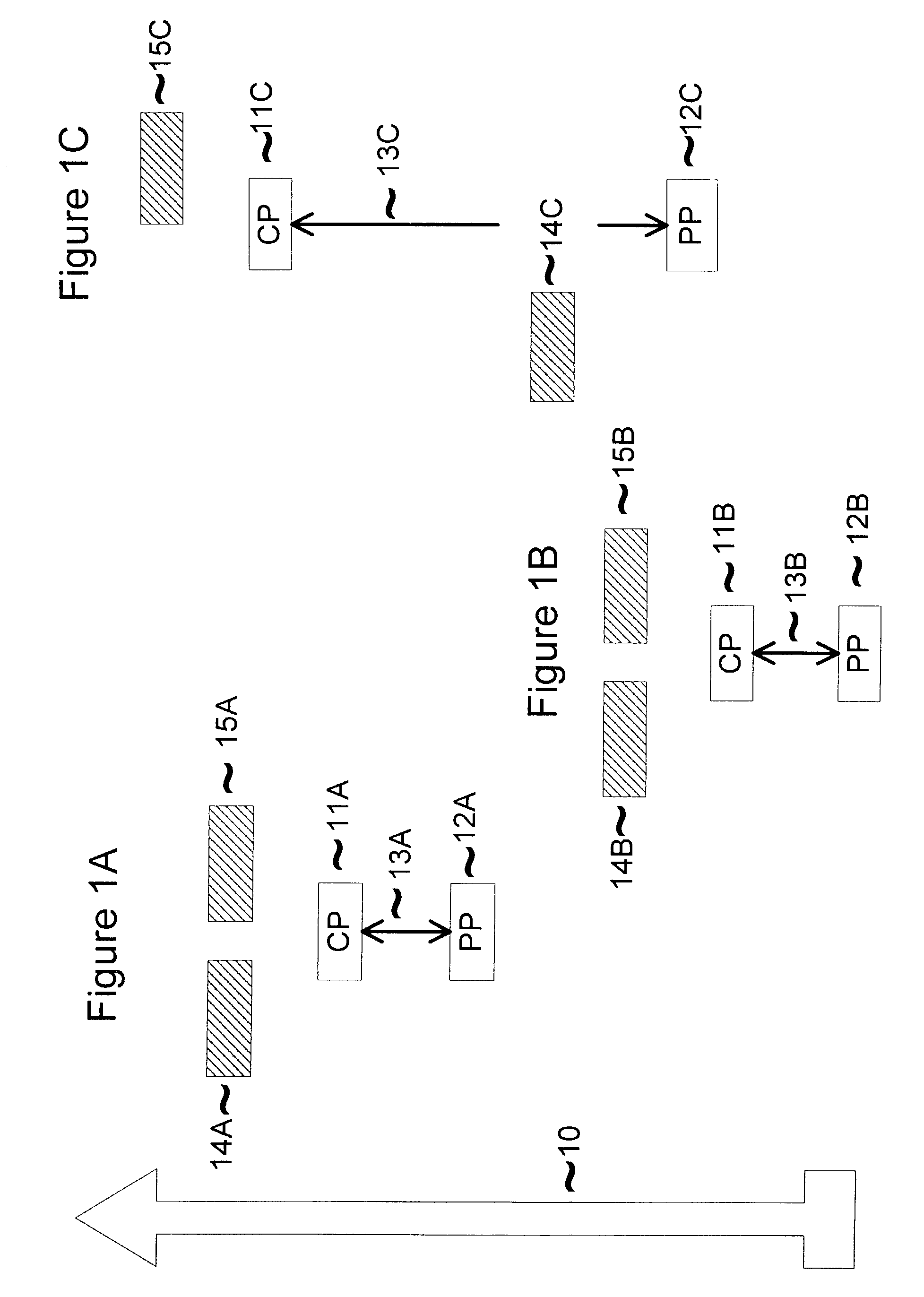Systems and methods of improving diesel fuel performance in cold climates
a technology of diesel fuel and cold climate, applied in the direction of fuels, machines/engines, mechanical equipment, etc., can solve problems such as reducing yield, and achieve the effect of substantially avoiding filter plugging
- Summary
- Abstract
- Description
- Claims
- Application Information
AI Technical Summary
Benefits of technology
Problems solved by technology
Method used
Image
Examples
example i
Preparation of a Paraffinic
Fischer-Tropsch Diesel Fuel
[0087]A blended highly paraffinic feedstock having material boiling in the lighter half of the distillate fuel product, and material boiling above the end point of the product was prepared from three individual Fischer Tropsch components.
[0088]
TABLE IProperties of Highly ParaffinicFischer-Tropsch Feed ComponentsPropertyComponent 1Component 2Component 3Wt % in blend27.823.149.1Gravity, ° API56.844.940.0Sulfur, ppmOxygen, ppm1.580.65by Neut. Act.Chemical Types,wt % by GC-MSParaffins38.462.685.3Olefins49.528.21.6Alcohols11.57.39.3Other Species0.53.93.8Distillation by D-2887,° F. by wt %0.5 / 5 80 / 199 73 / 449521 / 626 10 / 30209 / 298483 / 551666 / 758 50364625840 70 / 90417 / 485691 / 791 926 / 1039 95 / 99.5518 / 709 872 / 10741095 / 1184
[0089]The blend was prepared by continuously feeding the different components down-flow to a hydroprocessing reactor. The reactor was filled with a catalyst containing alumina, silica, nickel, and tungsten. The reactor was sul...
example ii
Effect of Pour Point Depressants
[0096]The following two pour point depressants (PPD) were mixed with the diesel fuel of Example I:[0097]a. Plexol 156 (full designation is Viscoplex 1-256), supplied by Rohm & Haas, a polyalkyl methacrylate diluted in a solvent neutral oil; and[0098]b. TDA 1197, supplied by Texaco Fuel Additives, an ethylene vinyl acetate copolymer in an aromatic solvent.
[0099]
CloudPourDifferencePPDpointpointCloud-PourFuelmg / kgType° C.° C.° C.FT Diesel Fuel—−19−245FT Diesel Fuel + 1Plexol 156−19−245FT Diesel Fuel + 4Plexol 156−20−277FT Diesel Fuel + 30TDA 1197−18−246FT Diesel Fuel +100TDA 1197−18−279FT Diesel Fuel +300TDA 1197−18−3618
[0100]Both depressants reduced the pour point, but made no significant reduction on the cloud point. Thus they can be used to reduce the pour point of a high pour point fuel, while relying on heated fuel filters to solve the problems associated with a high cloud point, as discussed earlier.
[0101]Unfortunately, the analysis of pour point d...
PUM
| Property | Measurement | Unit |
|---|---|---|
| pour point | aaaaa | aaaaa |
| pour point | aaaaa | aaaaa |
| cloud point | aaaaa | aaaaa |
Abstract
Description
Claims
Application Information
 Login to View More
Login to View More - R&D
- Intellectual Property
- Life Sciences
- Materials
- Tech Scout
- Unparalleled Data Quality
- Higher Quality Content
- 60% Fewer Hallucinations
Browse by: Latest US Patents, China's latest patents, Technical Efficacy Thesaurus, Application Domain, Technology Topic, Popular Technical Reports.
© 2025 PatSnap. All rights reserved.Legal|Privacy policy|Modern Slavery Act Transparency Statement|Sitemap|About US| Contact US: help@patsnap.com


